Our Blog - Safari 2023 - Ndutu area Day 2 - Part 1, Tanzania
We woke up to some zebras grazing outside of our tent and also saw 2 hot air balloons flying overhead. We will be in one of those balloons tomorrow!

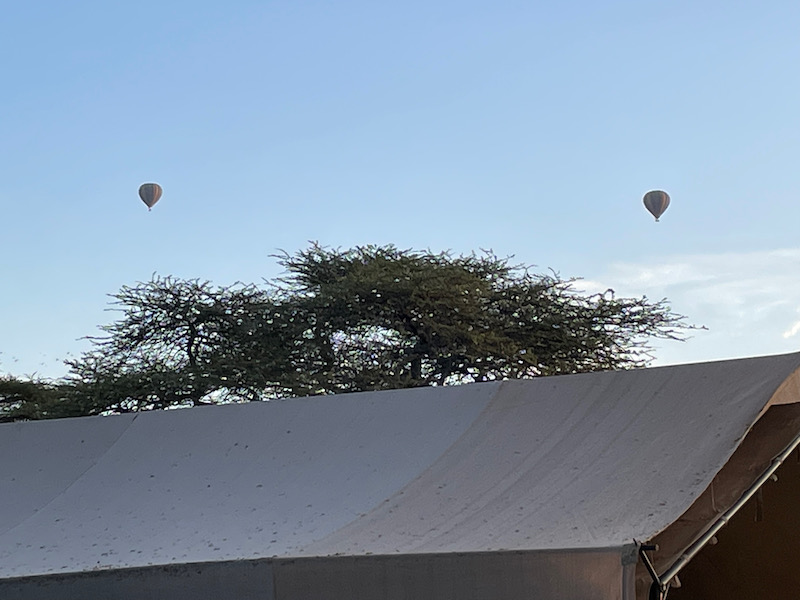
We have heard of guinea fowl before, but mostly at the butcher where you can buy them next to the chickens. Here, we saw quite a few guinea fowl, mostly helmeted guinea fowl with their blue heads.

Weaver birds are the yellow birds here, and they are named for their elaborately woven nests that you can see here, hanging like balls from the tree branches.


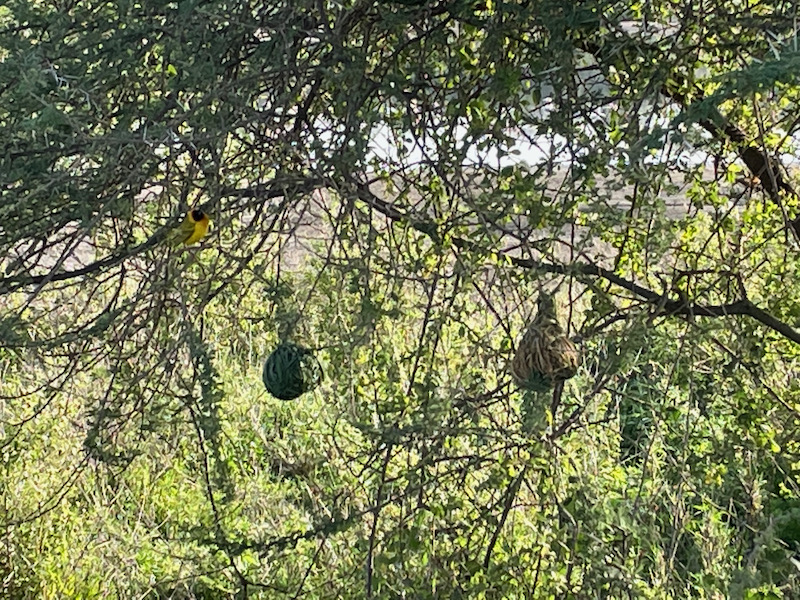
You'll see lots and lots of wildebeests in my various blogs, since the timing and location of our safari was for the zebra and wildebeest migration. What we saw here on the open savanna were all adults, whereas you'll see quite a few babies in my crater blog. The video is fairly short and shows the grazers moving across the grass.
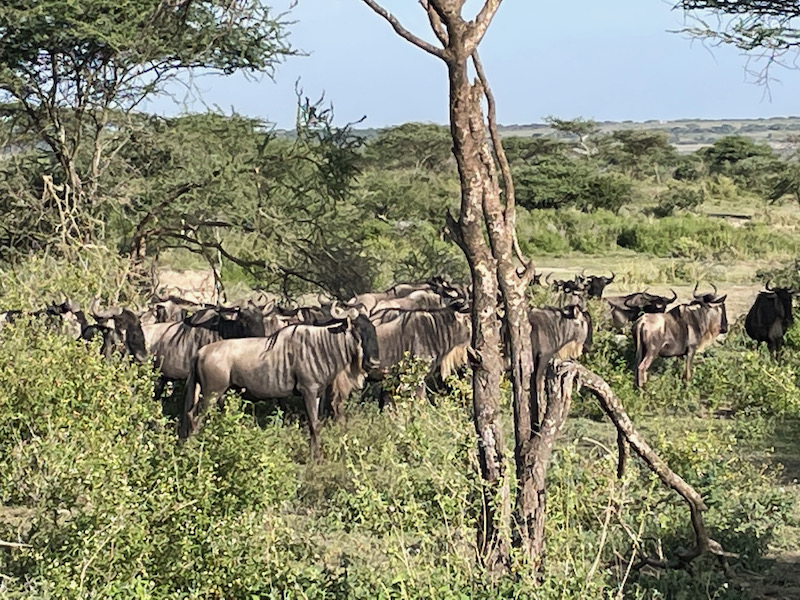
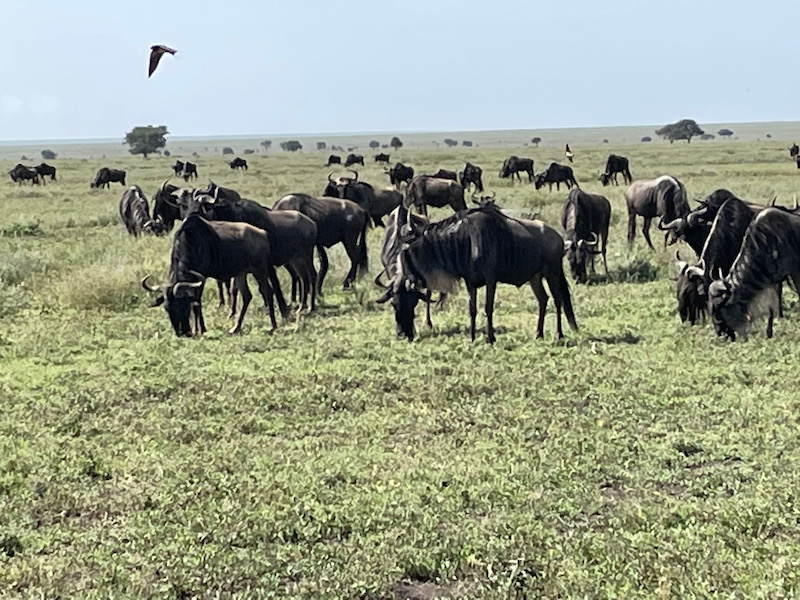
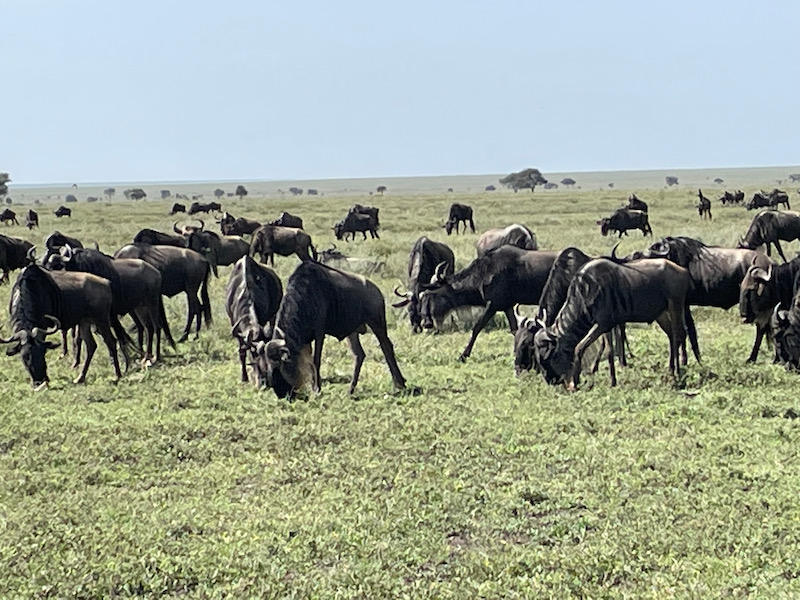
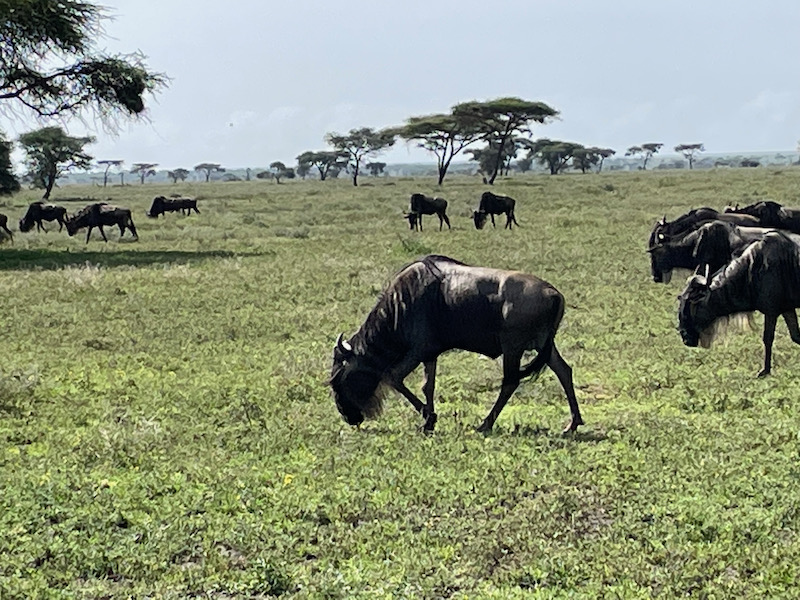
Every lake of any size, we saw lots of flamingos.


To me, this looked like a hawk up at the top of the tree, although the guide said it was a type of eagle.


We started seeing Maribou storks in this part of the Ndutu area, and we saw more once we got into the crater. I had never heard of or seen these types of storks before. It is sometimes called the "undertaker bird" due to its shape from behind: cloak-like wings and back, skinny white legs, and sometimes a large white mass of hair. It is a huge bird, reaching almost 5 feet in height, weighting 20 lbs, and with a wingspan of 12 feet although 7-9 feet is more common). I was actually a bit shocked it could fly! The males have a pink gular sac hanging from the throat that is used in courtship rituals.

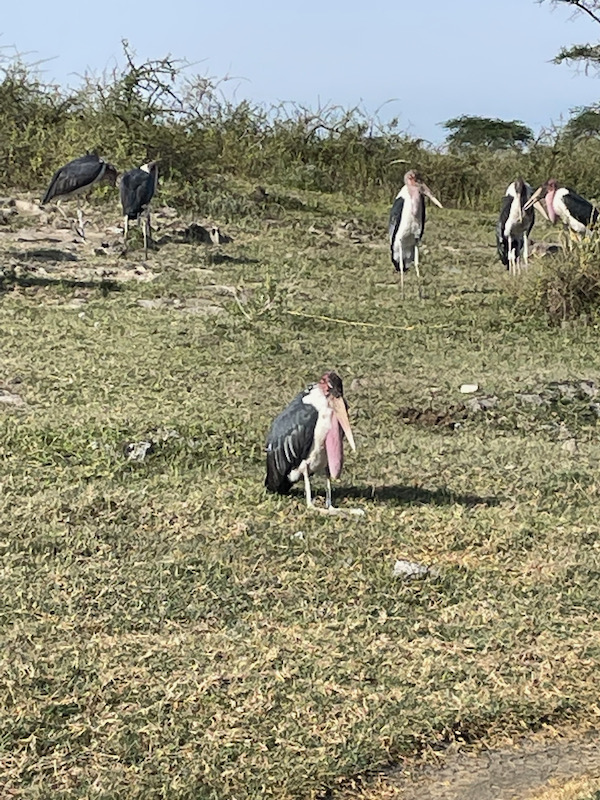

We saw a few Jackals in this area, which based on the coloring most likely is a black-backed jackal. It is the smallest of the jackal species but also the most aggressive.
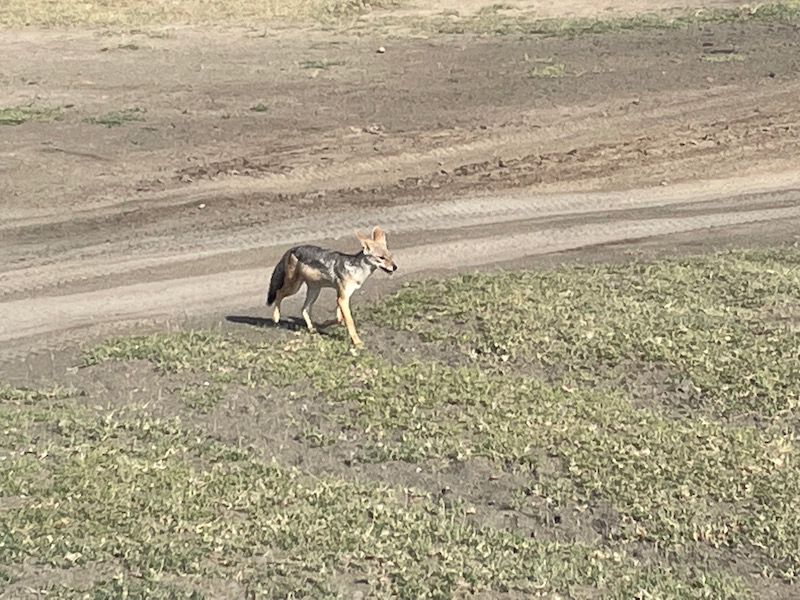
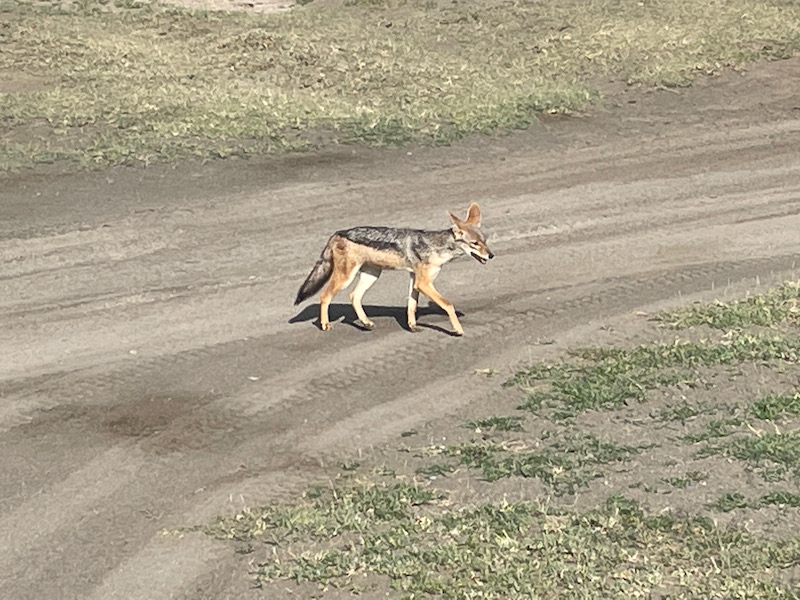

These little birds on the ground are the Black-faced sandgrouse. You probably are wondering by now how we know all of these odd species ... I was busily writing down all of the names as our guide was rattling them off!
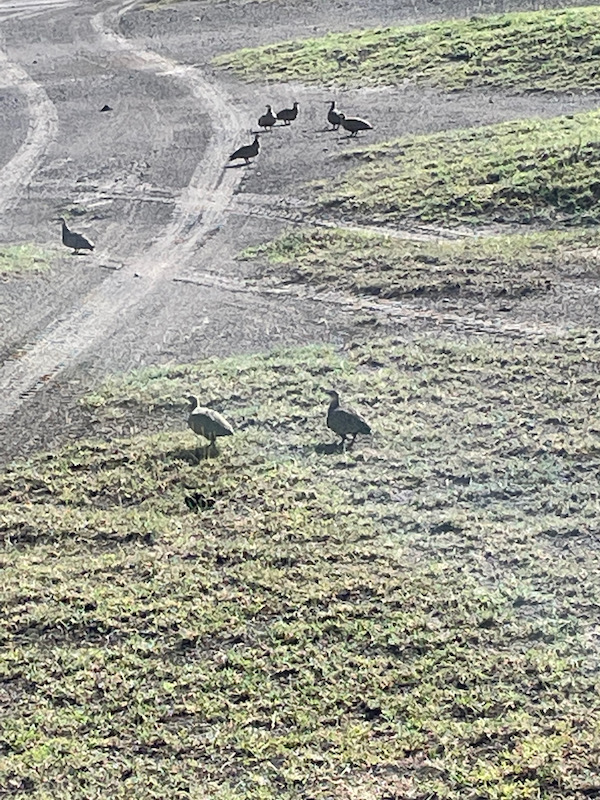


Next, we met up with a large group of zebra drinking at a stream that was running through the area. Zebras are social animals and live together in herds. As they migrate to new feeding grounds, ‘super herds’ may form consisting of thousands of animals. As we saw in various areas, they team up with other grazers such as antelope and wildebeest. The guide mentioned that they don't actually compete for food even though they are all grazers, since they tend to eat different heights of grass ... some eat the tops, others eat the middle parts, and the bottom part at ground level is grabbed by the rest.
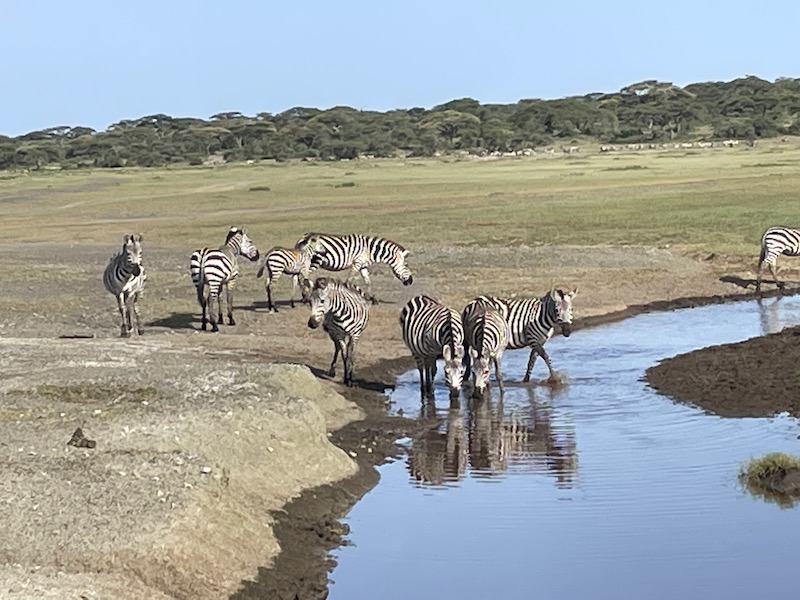
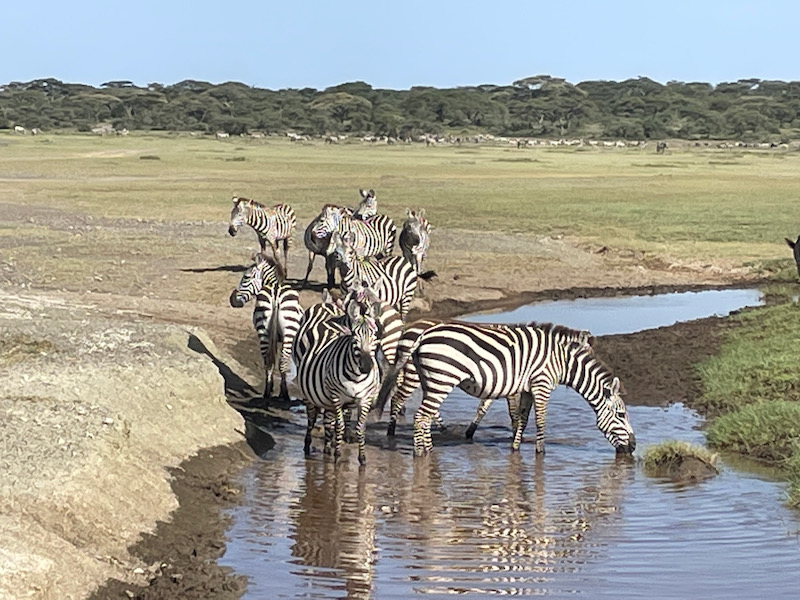

We aren't sure whether these zebras are playing or fighting, but probably not courting since most of the foals had already been born.
The Coke’s hartebeest is a large antelope that is native to mainly hot and dry environments. They have developed several adaptations to help with living in those environments and require less water than other similar species like the Eland.



I was really impressed that I was able to see these Spotted hyena laying under a small tree. You can tell the spotted hyena from the striped hyena based on, not only spots vs stripes, but also rounded ears vs a pointed ears.
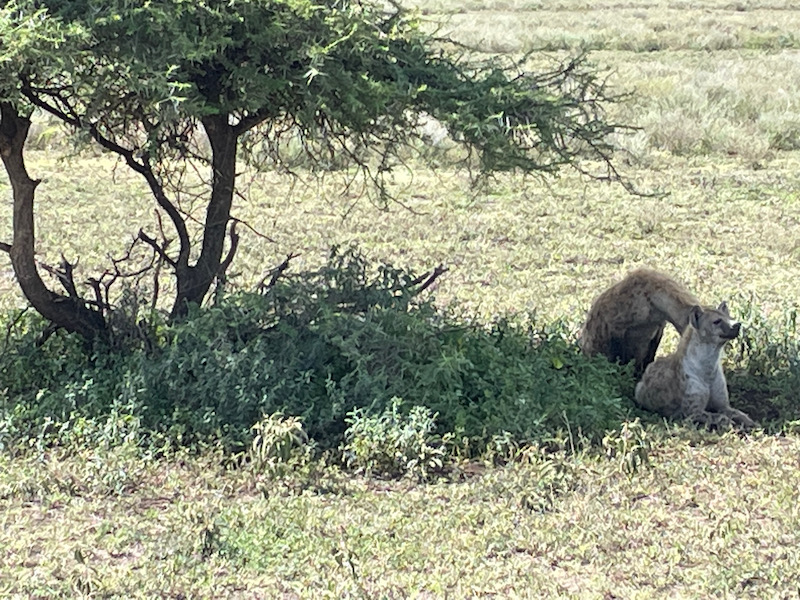
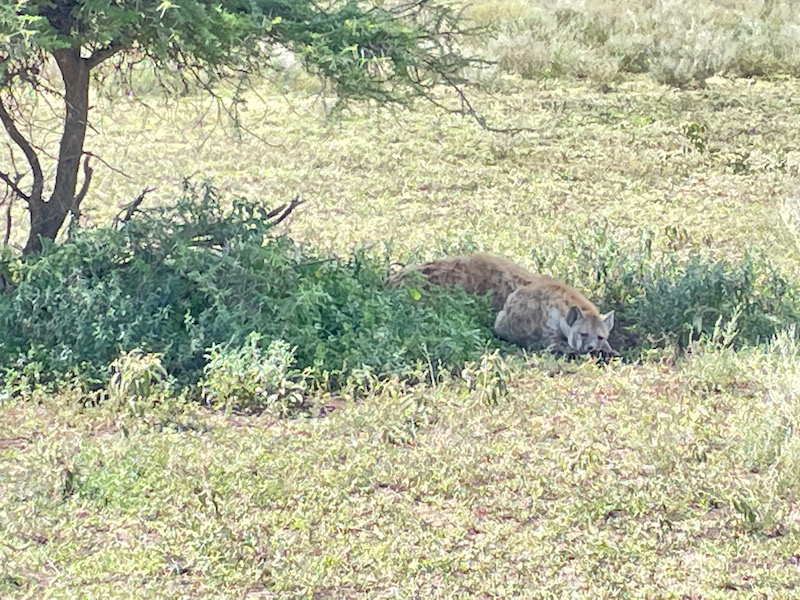
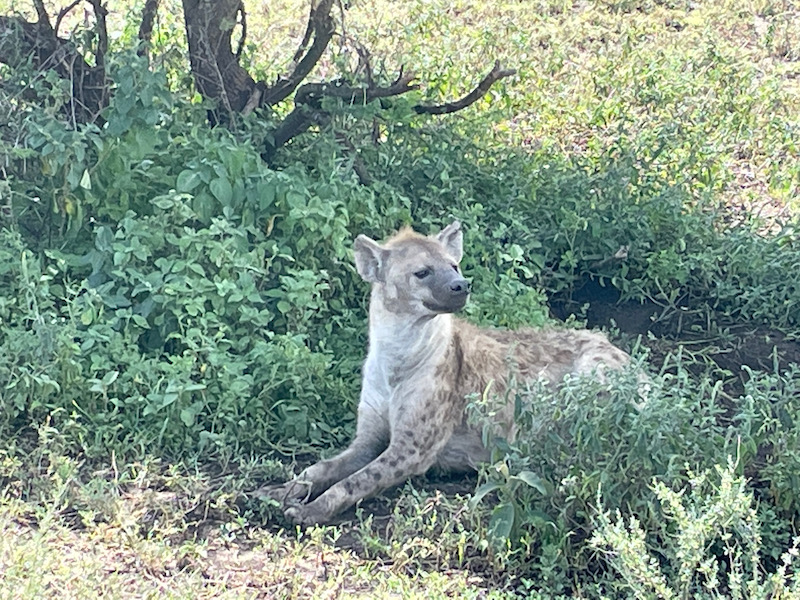
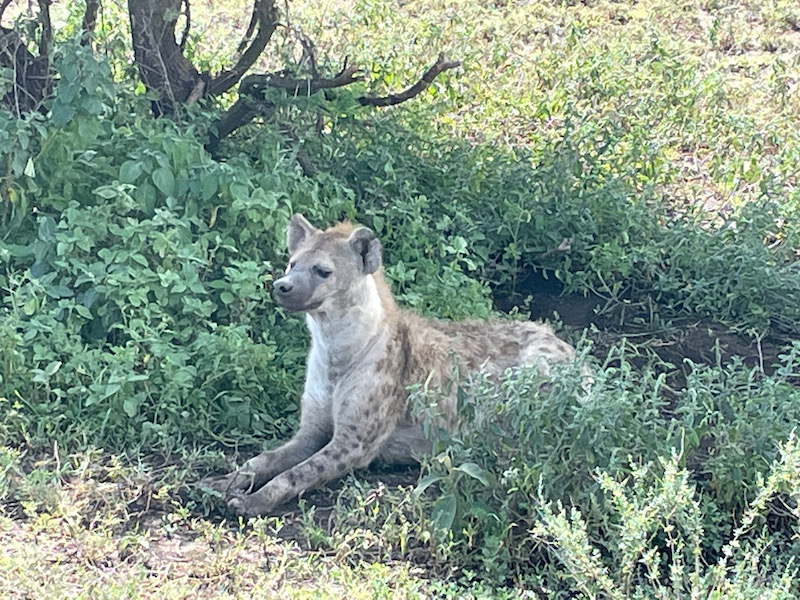
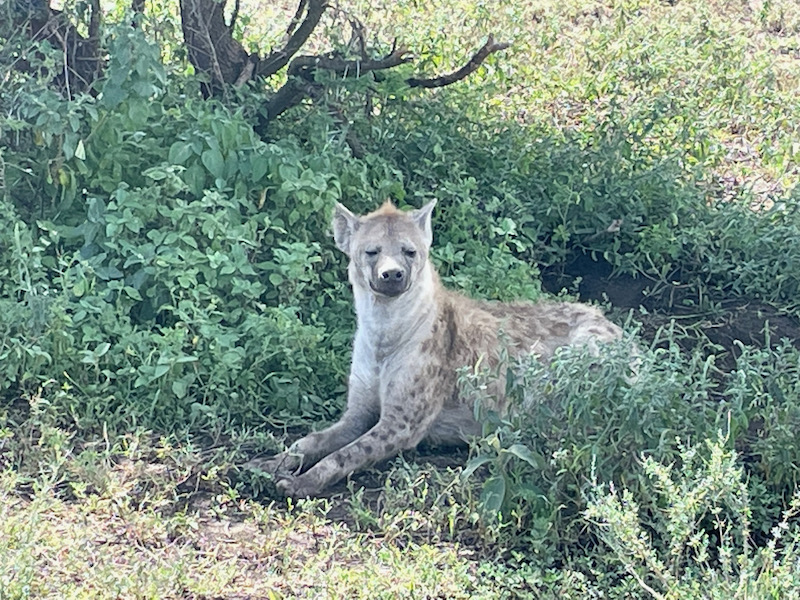

Then we came across an entire group of elephants. The females tend to live in these family groups, consisting of one or more related females with their offspring. The family group does not include bulls and are usually led by the oldest cow, known as the matriarch. We got into a good position and parked and then watched (and video'd) as the group walked by, trying to also grab some pictures of the elephants as they were semi-close.

It was interesting to see how close they came to the truck without really caring much ... of course, maybe it was because we pose no threat to them. We then repositioned ourselves a bit further down and got to watch them by again.

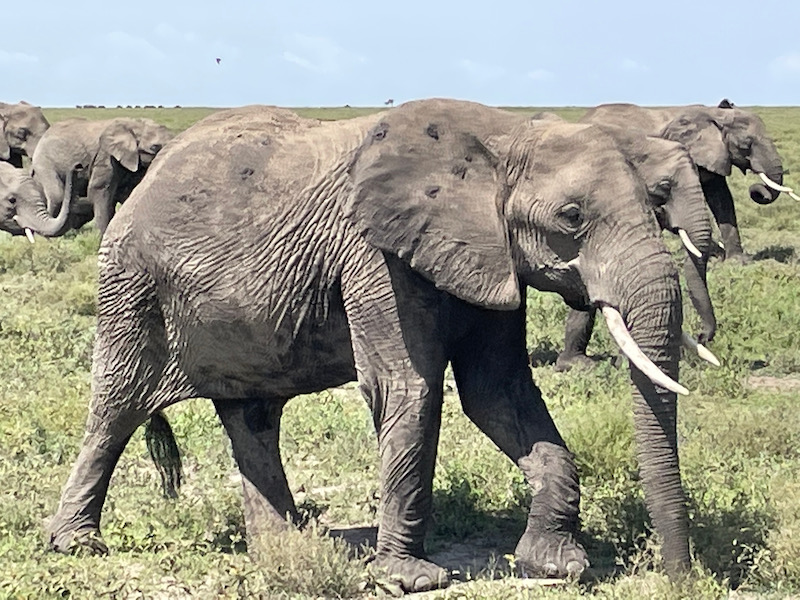

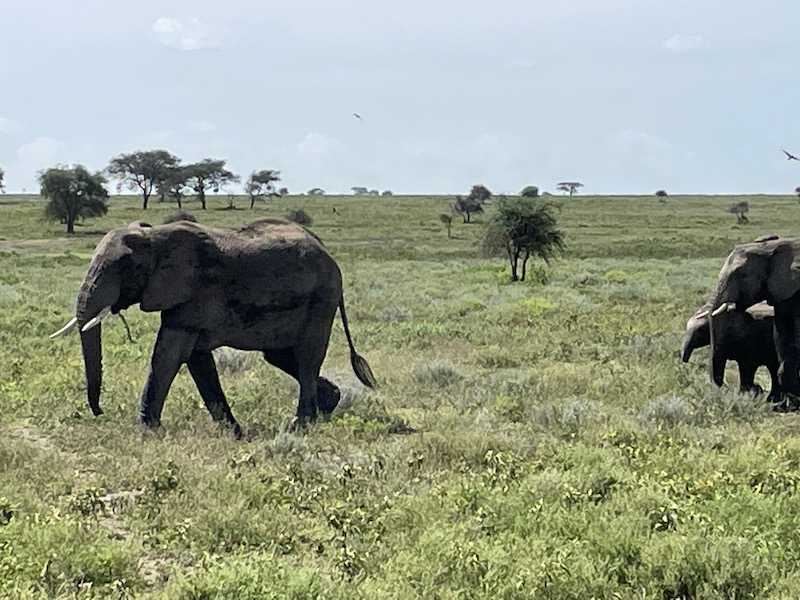
These are not the best pictures but I decided to leave them in because it was the only pictures/video I got of a Serval, which is a wild cat that is native to Africa. They are solitary cats and are normally alone. They look very much like cheetahs except that cheetahs have longer legs and smaller ears than the serval.
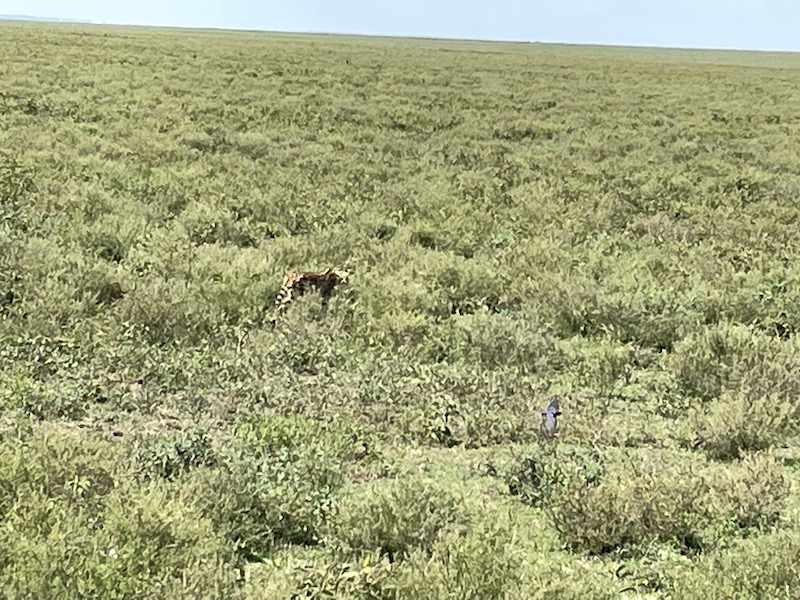

Another reminder that these are wild animals ... you can tell from the skin on the leg that this used to be a zebra.
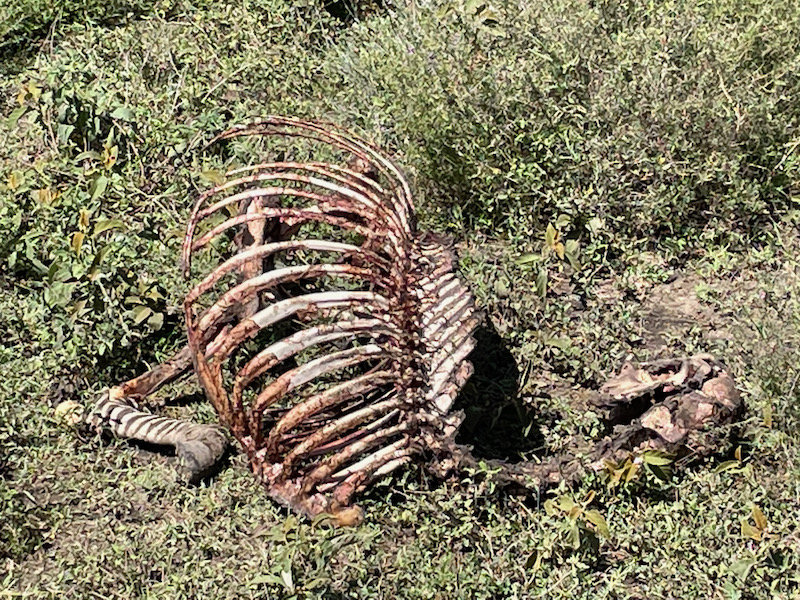
Here we have another set of lionesses, surrounded by safari vehicles. And you can see how close they come up to the vehicles.
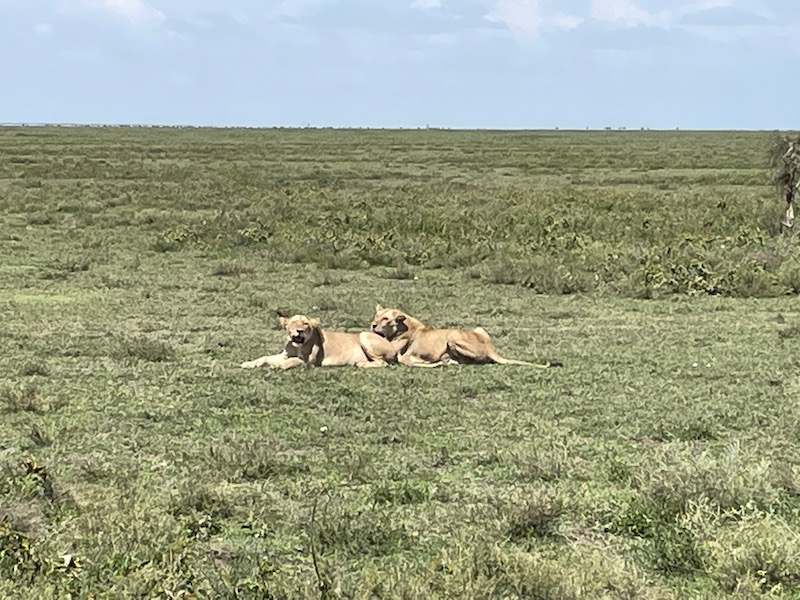
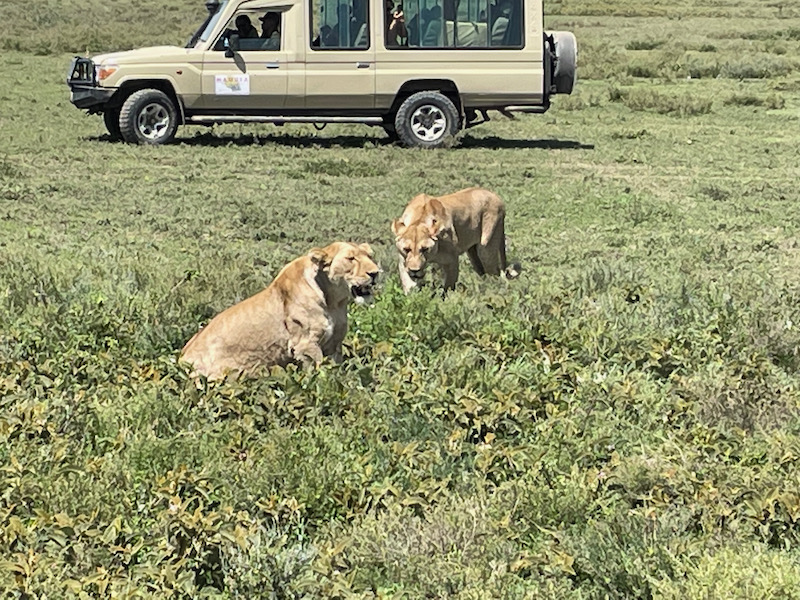
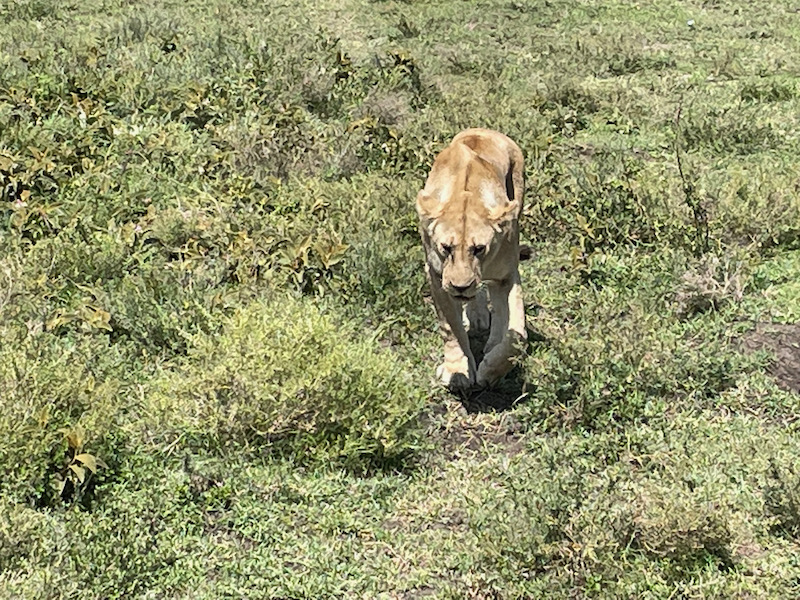
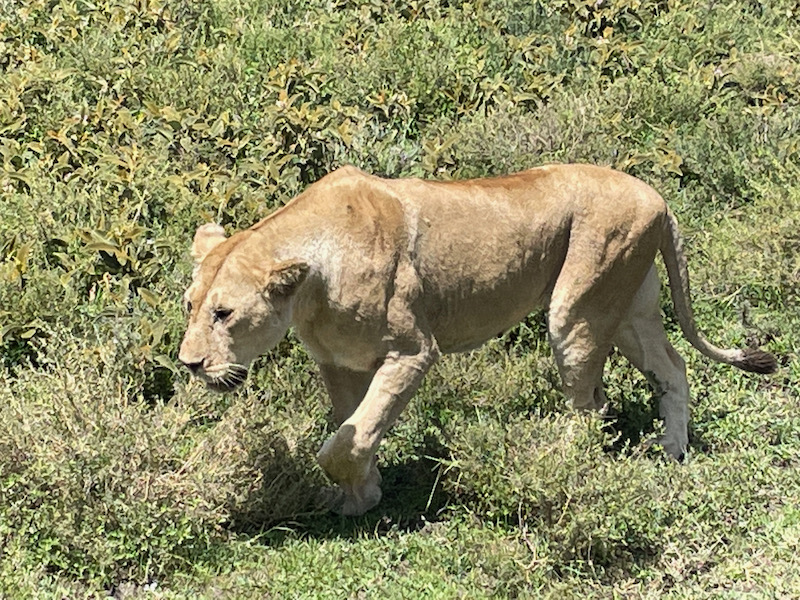
In some cases, they are looking for shade, which they can find sometimes, like this little lady, up next to one of the trucks.
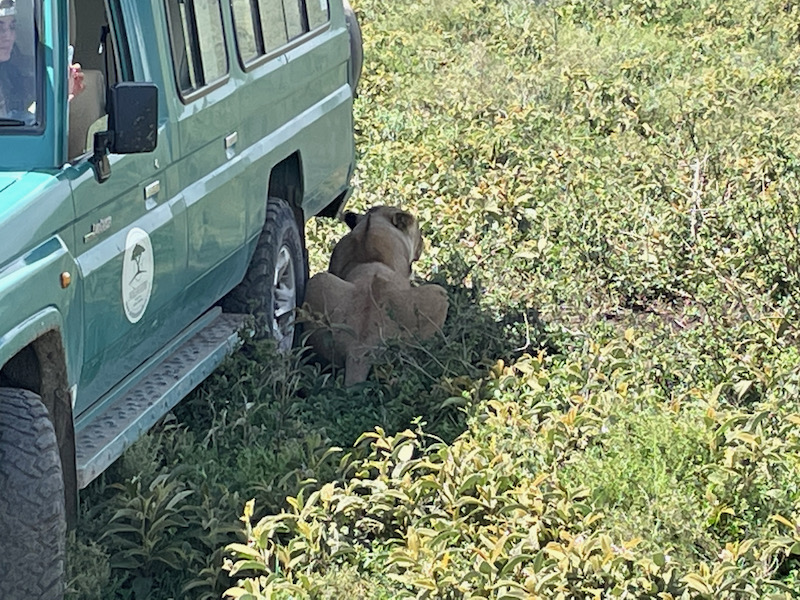
It was so amazing getting such an up-close view of the lionesses as they walked by
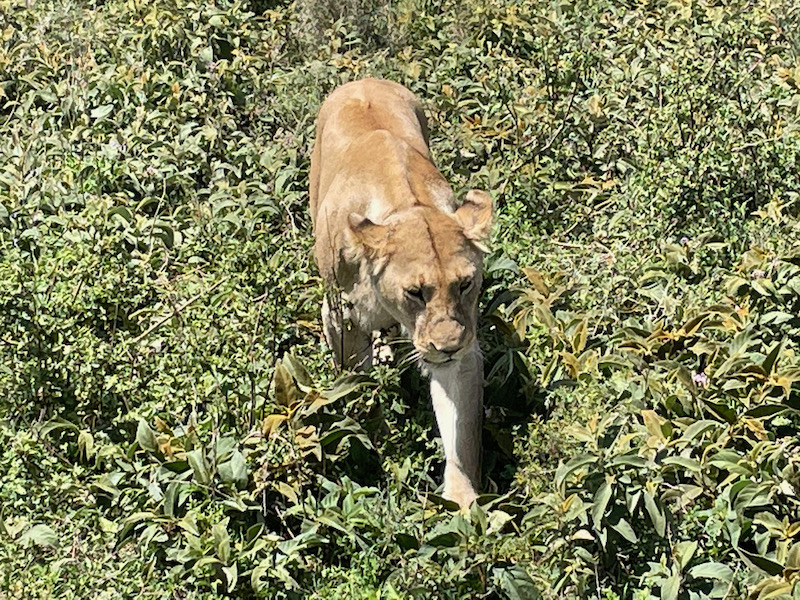


Since the page was getting a little long, I went ahead and put the rest of the pictures on a separate page.